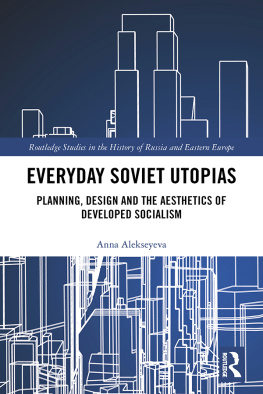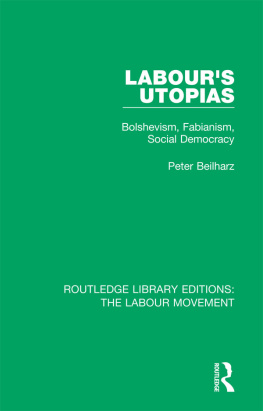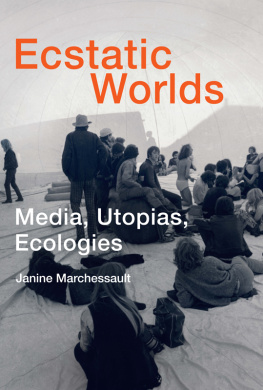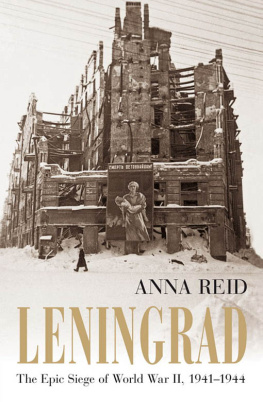Everyday Soviet Utopias
This book explores how intellectuals of the later Soviet decades the 1970s and 1980s sought to bring about the socialist utopian world. It argues that the last two decades of the Soviet Union were not characterised by state withdrawal and malaise, as some scholars have argued; attempts to envisage and enact Utopia remained as imaginative and creative as ever. The book considers what these utopian ideas looked like through housing schemes, layouts of districts and cities, design of objects and interiors, and proposals for the organisation of family and social life. Relating developments in the Soviet Union to evolving social theory and postmodernism more broadly, the book draws transnational parallels between the intellectual history of east and west in the late twentieth century.
Anna Alekseyeva completed her doctorate at the University of Oxford.
Routledge Studies in the History of Russia and Eastern Europe
Reassessing Orientalism
Interlocking Orientologies during the Cold War
Edited by Michael Kemper and Artemy M. Kalinovsky
Governing Post-Imperial Siberia and Mongolia, 1911 1924
Buddhism, Socialism, and Nationalism in State and Autonomy Building
Ivan Sablin
Creating Nationality in Central Europe, 18801950
Modernity, Violence and (Be)longing in Upper Silesia
Edited by James Bjork, Tomasz Kamusella, Timothy Wilson, and Anna Novikov
The Russian Liberals and the Revolution of 1905
Peter Enticott
The Politics of Culture in Soviet Azerbaijan, 192040
Audrey L Altstadt
Womens Experiences of Repression in the Soviet Union and Eastern Europe
Kelly Hignett, Melanie Ilic, Dalia Leinarte and Corina Snitar
Leadership and Nationalism in Azerbaijan
Ali Mardan bey Topchibashov, Founder and Creator
Jamil Hasanli
Everyday Soviet Utopias
Planning, Design and the Aesthetics of Developed Socialism
Anna Alekseyeva
For a full list of available titles please visit: www.routledge.com/Routledge-Studies-in-the-History-of-Russia-and-Eastern-Europe/book-series/SE0329
Everyday Soviet Utopias
Planning, Design and the Aesthetics of Developed Socialism
Anna Alekseyeva
First published 2019
by Routledge
2 Park Square, Milton Park, Abingdon, Oxon OX14 4RN
and by Routledge
52 Vanderbilt Avenue, New York, NY 10017
Routledge is an imprint of the Taylor & Francis Group, an informa business
2019 Anna Alekseyeva
The right of Anna Alekseyeva to be identified as author of this work has been asserted by her in accordance with sections 77 and 78 of the Copyright, Designs and Patents Act 1988.
All rights reserved. No part of this book may be reprinted or reproduced or utilised in any form or by any electronic, mechanical, or other means, now known or hereafter invented, including photocopying and recording, or in any information storage or retrieval system, without permission in writing from the publishers.
Trademark notice: Product or corporate names may be trademarks or registered trademarks, and are used only for identification and explanation without intent to infringe.
British Library Cataloguing-in-Publication Data
A catalogue record for this book is available from the British Library
Library of Congress Cataloging-in-Publication Data
A catalog record has been requested for this book
ISBN: 978-1-138-49711-5 (hbk)
ISBN: 978-1-351-01978-1 (ebk)
Typeset in Times New Roman
by Wearset Ltd, Boldon, Tyne and Wear
To my parents
and to their parents
Contents
My gratitude goes out to those who made this book possible. Judith Pallot and Linda McDowell served as my academic mentors during my time at Oxford, providing input that helped to shape the contours of this book. Numerous faculty members at Oxford and beyond reviewed and provided input during various stages of the drafting process, including Nicolette Makovicky, Denis Shaw and Ian Klinke. Ariana Tobin, Sara Nawaz and Leo Alekseyev read and reviewed various iterations of this text and provided moral encouragement along the way.
I am grateful to the staff and students at Oxfords School of Geography and the Environment, the graduate community at Balliol College and my friends at Oxford for creating an intellectually stimulating community that I was lucky to be a part of. The financial support of the Rhodes Trust and Hertford College during my time at Oxford made this book possible.
My parents and my grandmother were themselves Soviet professionals. While the subject matter in this book does not directly relate to their disciplines, it was my desire to study something closer to home that propelled my interest in this subject matter. This book would not have been possible without my grandmother, who taught me to read and write Russian. A final thank you goes to Andrew Whitby, who provided constant support and joy from the very genesis of this project. Thank you for challenging me, grounding me and checking me on my use of multi-syllabic words.
But what distinguishes the worst architect from the best of bees is this, that the architect raises his structure in imagination before he erects it in reality.
(Marx, Capital (1867))
The everyday is a space of contradictions. It is simultaneously a site of alienation and liberation; its rhythms encompass both mundane cyclicality and the transformative potential of linearity. The everyday or, put differently, the common place was considered a glorified physical and discursive field dating back to the ancient Greeks: Aristotle deployed common places (topics) as instruments of skilful rhetoric, Renaissance authors used the common place to refer to a verse of ancient wisdom, and Kants principle of common sense (sensus communis) connected personal aesthetic tastes to the universal design of nature. Svetlana Boym traces this genealogy in her book, Common Places, and describes how reverence for the everyday dissipated in the eighteenth century as the quotidian degenerated from a figurative ideal to a literal clich.1 Even in the face of this fall in status, a yearning for the original idyll of the everyday remained. It is no coincidence, writes Boym, that the descent of the everyday was accompanied by a resurgence of utopian thought.2
This book proceeds from the notion that the everyday is an instructive lens through which to study a societys material, social and aesthetic ideals. It explores professional visions for everyday life in a developed socialist society and investigates how these ideals could have been imagined even amidst the seeming sclerosis of the last two Soviet decades. The everyday was the original staging ground from which Marxs communist utopia flourished. The underlying principle of Marxs materialist philosophy lay in the proposition that consciousness derives from matter, and that the transformation of society would therefore have to derive from a transformation of the material conditions of everyday life. Following in the Marxist tradition, twentieth-century European intellectuals such as Henri Lefbvre, Michel de Certeau and Guy Debord interpreted the everyday as a realm of empowerment and resiliency against various apparatuses of social control.3 According to Maurice Blanchot, this capacity for subversion designates the everyday as a utopia as a map for discovering what the future might look like.4











